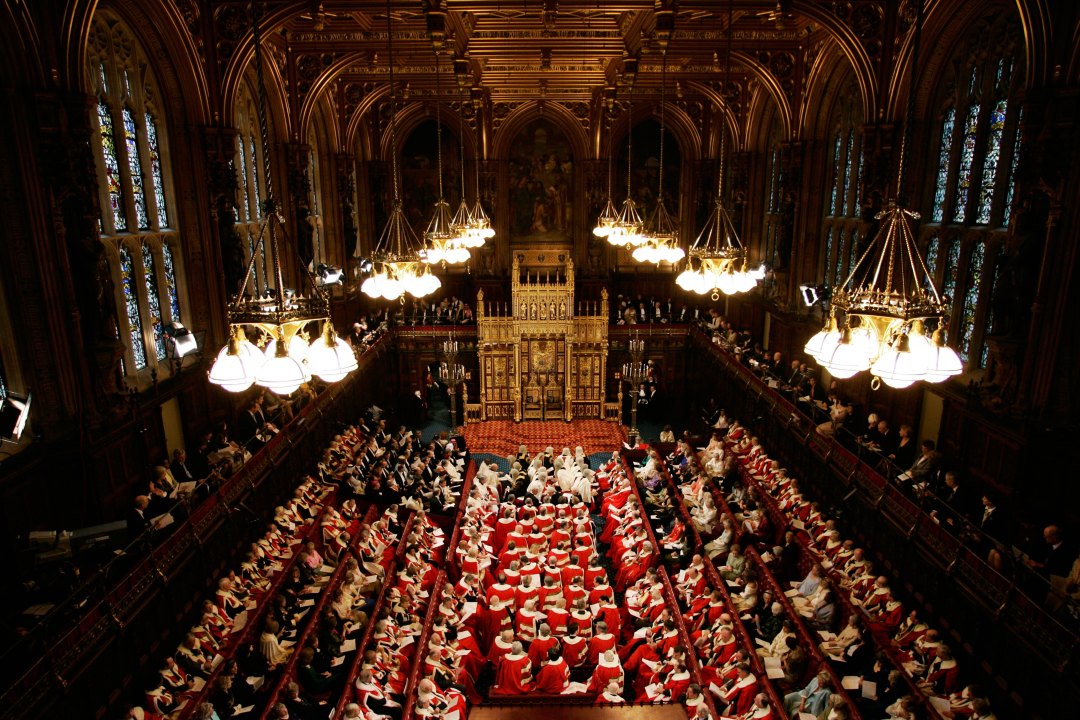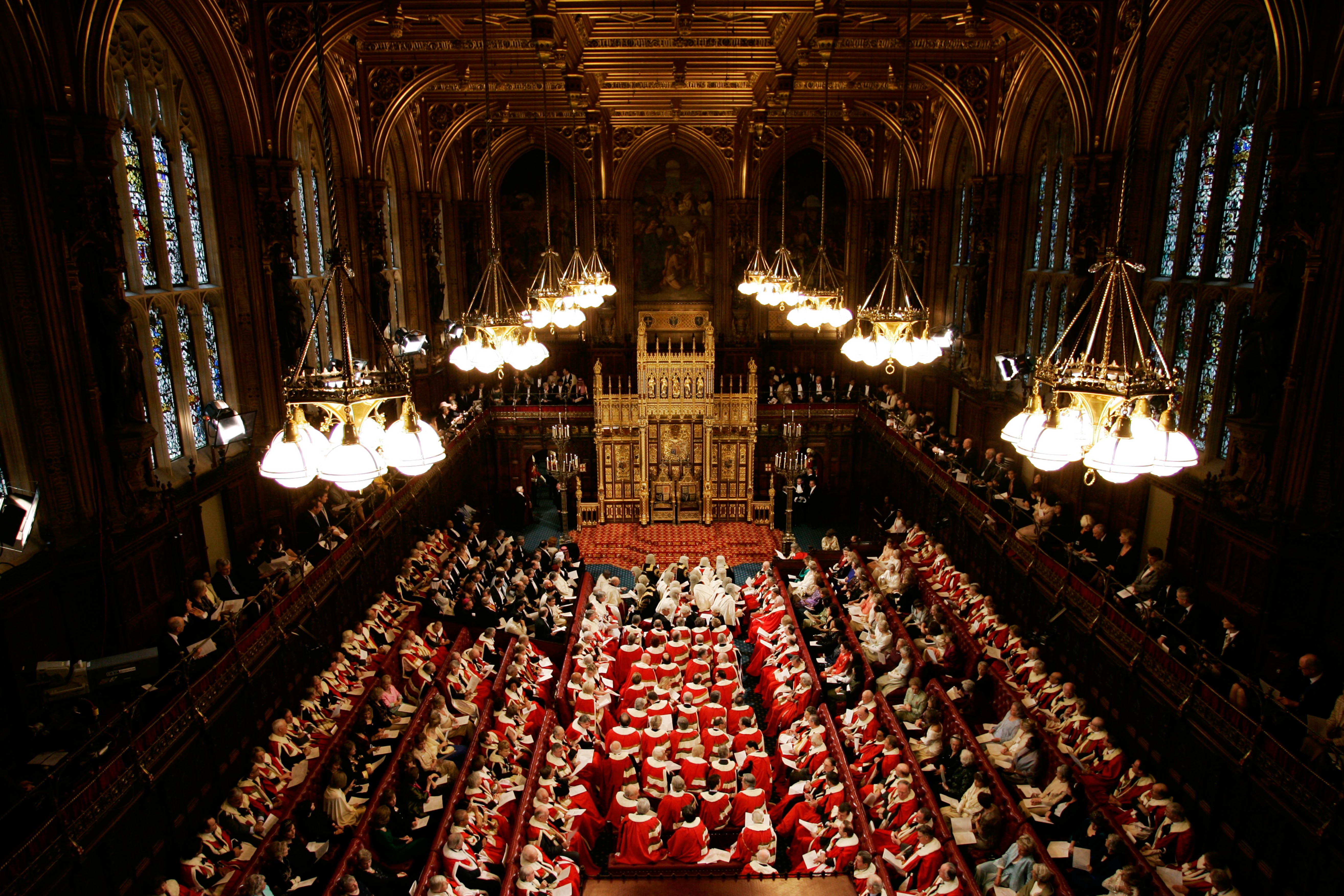The Houses of Parliament are falling down. According to the Independent Options Appraisal of the Palace of Westminster Restoration and Renewal Programme – a group of engineers and project managers commissioned to have a butcher’s – the Palace of Westminster is ‘partly sinking, contains asbestos and has outdated cabling’, is ‘infested with rats and mice and in an advanced state of disrepair’ and will take £5.7 billion and 32 years to put right, unless MPs and Lords shuffle off somewhere else for a bit, in which case it’ll be £3.5 billion over six years. Without such repairs, ‘major, irreversible damage’ looms.
Several MPs have taken advantage of the report to suggest that leaving London would not only let us fix up the dilapidated diet, but also beef up political participation in the provinces; doe-eyed Labour leadership contender Andy Burnham last week suggested MPs could take a few years out in Manchester (which, by complete coincidence, he represents). Others have pointed out that such a move might finally force us to work out what to do about the House of Lords, or that it would offer the opportunity of innovations like electronic voting in a refurbished Commons.
That’s all very well, but I’ll leave the debate about the political and procedural implications aside and focus on the building, if I may. The Palace of Westminster is one of the jewels of the Victorian world, and it deserves to be admired from the inside by more people. According to the latest figures, the estate is only 24th on the list of Britain’s most visited attractions, with 1.25m visits last year – barely more than Glasgow’s Riverside Museum, Zaha Hadid’s pointless, expensive and harder-to-visit reworking of the much-loved Museum of Transport.
Westminster’s not a welcoming or easy place to visit, and our terrorist-deterring arrangements haven’t helped. Options include writing to your MP or any of your pals who happen to be Lords, or booking a tour (‘every Saturday and most weekdays’) sufficiently in advance if you can find the right page on their website, or turning up on the day, weaving through a series of concrete crash barriers, tapping a policeman on the shoulder (being careful not to disturb the machine gun he has dangling from it) and asking if he could perhaps point you in the right direction. Even then, I gather, you’re likely to wait a couple of hours before being told to try again another day. The absence of any sort of marketing campaign also seems unlikely to be an accident.
At this point I should declare an interest. I used to work in the House of Lords as a Hansard reporter. Having sat through several postprandial hours of a debate on the benefits of the Segway personal transporter, it’s hard to disagree with Walter Bagehot’s quip that ‘the cure for admiring the House of Lords is to go and look at it’. It’s also hard, though, to keep the rational faculties clear and not be seduced by the awful, artificial and amusing work of Augustus Pugin and Charles Barry, and by the confidence of their assertion of British exceptionalism and (dubious) continuity. This appears throughout in the Tudor rose and portcullis motifs, like a successor superpower’s hammer and sickle in the following century. And like the greatest churches, mosques and temples, their designs play on our tendency – dangerous, but hard to resist – to confuse the aesthetic with the moral, greatness with goodness.
In the little corner of the chamber where reporters take notes, with some pompous peer telling half a dozen of his dozing fellows how to decide the makeup of a committee to determine the composition of a working group to investigate the regulation of the makeup of the committee, the eyes are inevitably drawn by the carved lions and unicorns, by the heraldic oak panels of the four patron saints, and eventually by the gilded ceiling whose ornaments and chandeliers seem to drip off it like stalactites. Overcome by a sort of reactionary Stendhal syndrome, I would sit there transported to my own Burkean Ambrosia. Perhaps Bagehot should have said the cure is to go and listen, while keeping your eyes shut.
The Commons is less ornate and perhaps cosier for it, but the most profound sensation to be had in the estate is to be alone at night in Westminster Hall, gazing up at the hammerbeam angels still keeping watch nine centuries on, and only dimly aware of the restless metropolis beyond the buttressed walls. On such occasions I found myself communing with Bede, imagining his ‘swift flight of a sparrow through the room wherein you sit at supper in winter, with your commanders and ministers, and a good fire in the midst, whilst the storms of rain and snow prevail abroad’.
The vanishing points of corridors, carpets and candles are the closest thing we have to Gormenghast; not for nothing does this organ’s parliamentary gossip columnist style himself Steerpike. It might be best, now that I think about it, to kick the MPs out for good and turn Westminster into an actual theme park, with actors on loan from the Globe recreating the Norway and Maastricht debates. That way the woolsacks, the maces, the sword hooks and all the other archaisms will at least be preserved in some form, rather than lost in the boring modernisation that will come sooner or later.
Either way, I feel these experiences should be open to more people, whether natives or tourists; I don’t think such intricate craftsmanship, such artful propaganda, should only be enjoyed by the few who work there or the slightly more few who now visit. So, when they get round to doing it up, I hope they’ll work out how to let more folk come and see the place – worthwhile in itself, and of course it would help pay the workmen.
I’m aware, though, that if they take my advice there’s a high risk they’ll end up throwing Zaha Hadid a few million for an iconic steel ‘n’ glass visitors’ centre with a predictable degree of sympathy for the surrounding environment. If so, I promise to write to the European Commission to demand that they force Google to remove this article from their search listings.







Comments